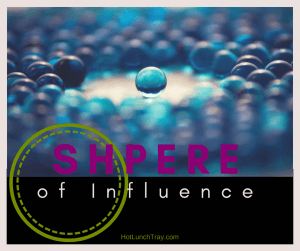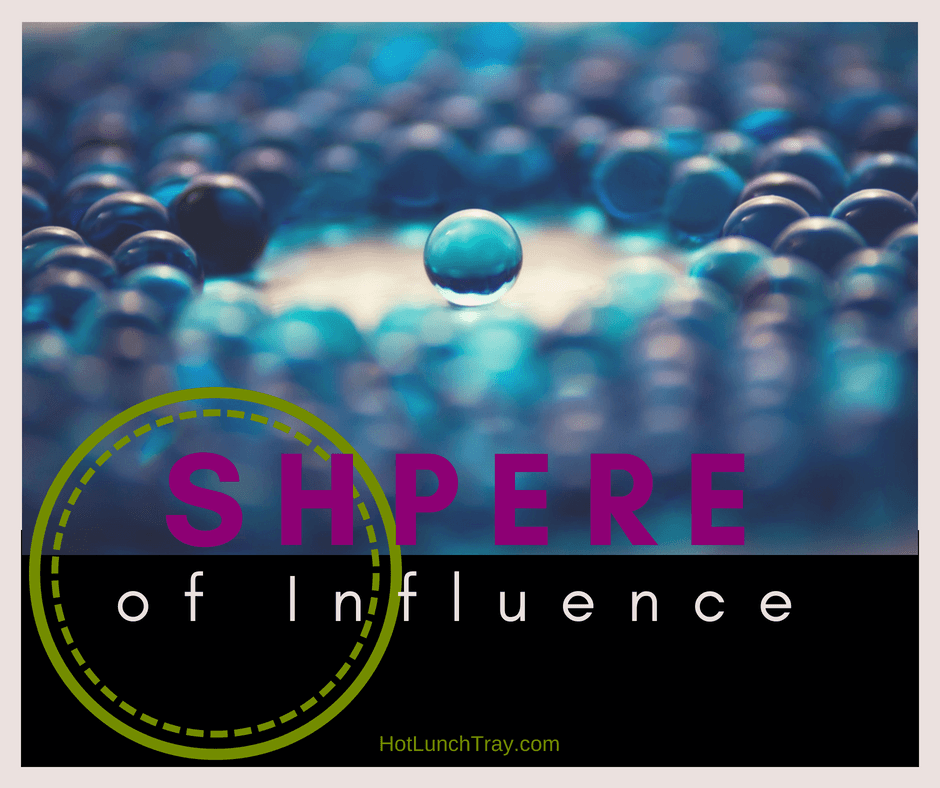Maybe the most exciting part of my job is when we talk about adding technology tools to our classrooms. As someone who always wanted to use technology but was limited by my personal budget, I feel like Robin Hood. I am part of a team who purchases educational technology software subscriptions for our teachers and students in our school district. We look at usage, offer training, and troubleshoot to make those programs that much more useful.
When I think about what I want educators to understand about #edtech positions in their schools, I want them to understand what influence do I/we hold over this software? What sphere of influence is each of us in? How can we use our spheres of influence to motivate others?
What Sphere of Influence?
The days of one vendor with one solution are long gone, each classroom has one #edtech experience. It is important for teachers to understand that experience and what influence they enjoy.
Teachers->Students
Teachers are almost constantly cuing students on what is and is not acceptable in their classroom. Aside from parents, this is the single largest impact on the technology students experience in classrooms. This is the “last mile” of any school-based technology initiative and it has as many variables as there are teachers in a school.
The teacher can use student influence to increase the popularity of technology. They can create demand within the students they teacher who either go to other grade level classrooms or they carry that expectation to the next school year teachers.
Students->Parents
While labeled as “Digital Natives,” students are possibly the least trained in teaching. Let alone teaching parents which may not be open to, able to, willing to learn about how a teacher is using a tool in the classroom. Often parents ask their students to carry out the task and remain incompletely informed about the educational goals of the teacher.
Students can create positive or negative feelings for a technology in their parents by how technology is introduced, trained on, and referenced.
If this is not a positive experience, teacher or school may choose to intervene and offer training and support to parents directly.
Teachers->Schools
Teachers provide valuable feedback to school about what technologies they want, which technologies they do not want, and anecdotal feedback. Depending on the task that technology accomplishes, the school is more or less responsive.
One way to equalize the feedback is to reference a rubric which is a consistent evaluator across all technologies (maybe one for hardware and one for software). This makes evaluations less about the importance of the task and more about the user experience.
Teachers->Districts
Maybe teachers give feedback directly to the district instead of to a school. If the organization if further away from the classroom the teacher may have to be more specific with feedback and consider timing (read: purchasing cycles).
Teachers need to be certain of the workflow for giving feedback to the district. Some districts may still collect feedback from a school, but ingest it at the district level. No one wants their feedback to not be heard because they followed the wrong process.
Teachers->EdTech vendors
To understand the motivation of an edtech vendor is simple. They care about sales. That is not to the exclusion of doing right by students, schools, and teachers, but that is their job to care about sales. EdTech vendors make money from sales.
Teachers influence edtech vendors in two ways. First, teachers can be a source for opportunities of creation for EdTech vendors. Teachers love to be listened to and they share with everyone who listens. Teachers can influence the future developments of edtech products yet on the market. Second, they are consumers of edtech products.
Teachers can influence edtech companies as they create edtech tools and when they are purchasing the edtech tools.
Schools->Districts
Schools are well qualified to fluidly operate within the district chain of command. If more than one school can coordinate a list of requests these are very easy for the district to grant. The district is more likely to respond in a positive nature to a group of schools requesting similar or same tools. THe efficiency of scale is working in their favor and there is a high likelihood other schools may welcome the addition.
Districts->EdTech vendors
Districts can influence EdTech vendors by purchasing in volume and that sometimes allows for districts to make requests of the vendor. These higher dollar purchases often are more favorable than an individual teacher or school purchase.
EdTech vendors->Districts/Schools
this is the danger zone. If Edtech companies are influencing, constricting, dictating how schools or districts are able the producers of tools are in charge of instruction. If this ever happens, be someone who speaks up for regaining control of the process and allowing instruction to be in charge.
Consider that when teaching relied more heavily on textbooks the vetting process for those texts was more formalized. In an era of weekly revisions, Edtech companies are less rigorous before getting a product to market. Also, the entry point for EdTech into our schools now has more points of entry: Technology Department, Special Education Department, School-based purchase, individual Teacher purchases. Then the standards for quality content, user experience, and accuracy were entirely different. Do not accept the first answer an EdTech vendor gives on the state of something they offer, give them feedback on how that could better serve students, teachers, schools. (See Districts & Teachers -> EdTech Vendors again!)
How to Use Your Influence?
Once you understand the sphere of influence you are in, and sphere of those you can influence, you can be strategic in how to use your influence.

Within Current Structure
Working within a given structure it is important to understand how all these spheres of influence converge, work together, and potentially work counter to each other. Sometimes you get to assemble a team which complements your strengths (Read: Who to Involve in EdCamp), but if you are working inside an established organization first learn the rules of the expected chain of command. Then use your sphere of influence to establish some group norms. Ask people in your sphere for their opinion on a tool. If the opinions are good, move forward trying the tools and provide those who had a positive view your review. If your sphere is not interested you can move ahead. However, to move forward it is best to change your current sphere to a positive view of the tool. There is always the possibility that you fail to build a positive consensus in your sphere. That’s not something to send up the chain of command. But if you can get buy-in it is time to spread your influence into a next level sphere for you to again test the waters, provide your review, and then ask for those who want to include themselves in your testing. These are your champions. If you get them to yes, they will move this up the chain for you.
Crossing Spheres of Influence
Crossing spheres of influence could move some outside their comfortable areas of expertise. They may feel exposed as not being experts. As you increase the visibility/vulnerability of some work to offer increasing assurances (Read: Increased transparency needs increased assurance). Even as you offer support, some will cut themselves off from leaving a comfortable sphere. While you can invite and offer support, you may have some who are not willing to take the perceived risk of leaving their comfort zone. When we intentionally narrow our sphere of influence we decrease our exposure to ideas other than our own.
If you are in education, hopefully, you remain open to learning new things. If you are in educational technology your pace of acquisition, evaluation, internalization, the next iteration is almost frantic. Respect the influence others are willing to exert on your and their behalf, but always ask more for help than you offer advice as a means to engage others in their spheres of influence.







2018-08-30 at 10:55 pm
Great post! This was really a good reading. I learned something new again today. Thanks for sharing ♥️ ♥️ By any chance you are interested on doing collaborations, you can check out the collaborations portal of Phlanx.com and connect with amazing brands!
Xoxo,
Tiffany
2018-09-03 at 12:52 pm
You made some valid points about who influence technology in the classroom. I worked in a school system for nine years and was constantly getting calls from technology vendors. I think it first starts with knowing the structure of the school district. Every school district operates differently according to its size. In my previous education district, departments made decisions according to grade level.
2018-09-03 at 3:30 pm
Thanks Sherri. That’s more great feedback to help get teachers into the influencer cycle in #edtech.
2018-09-21 at 12:39 pm
Nice article. My sister is a teacher and struggles with this exact same thing. I will show her this article and hopefully it helps her out. Thanks and keep up the good work.
Bobby Cain recently posted…Best bulk photo scanner
2018-09-21 at 12:51 pm
Thanks Bobby. Everyone can inform everyone else’s opinion!